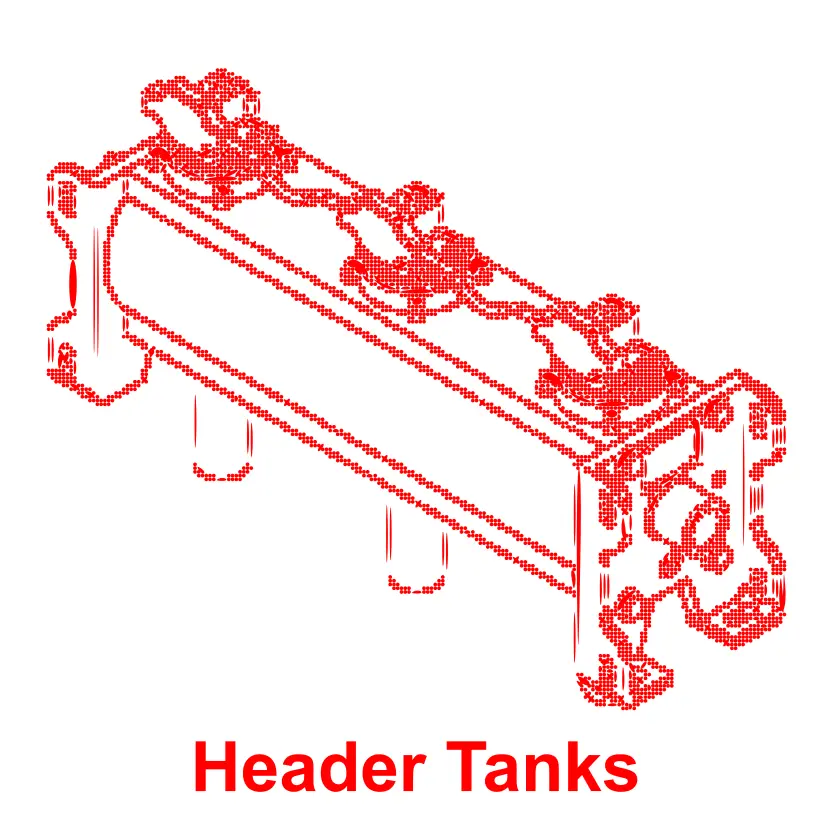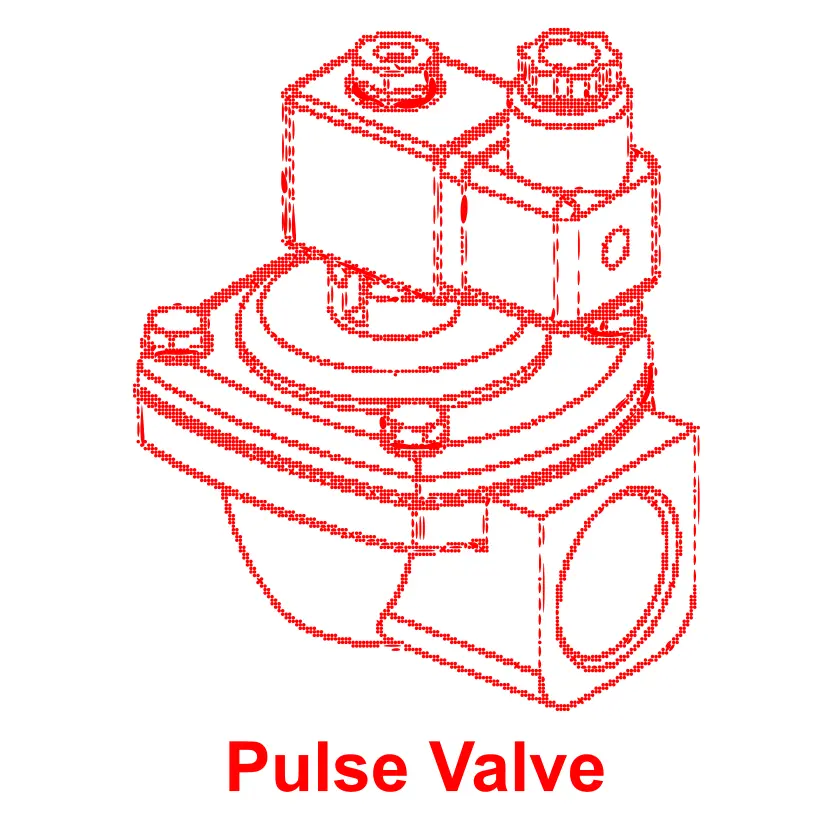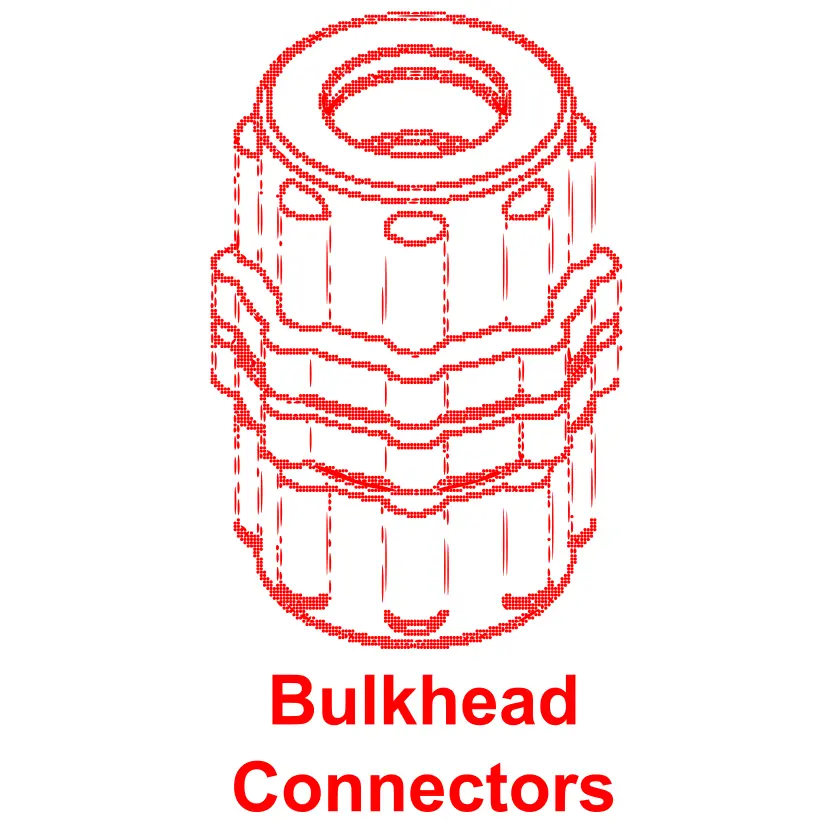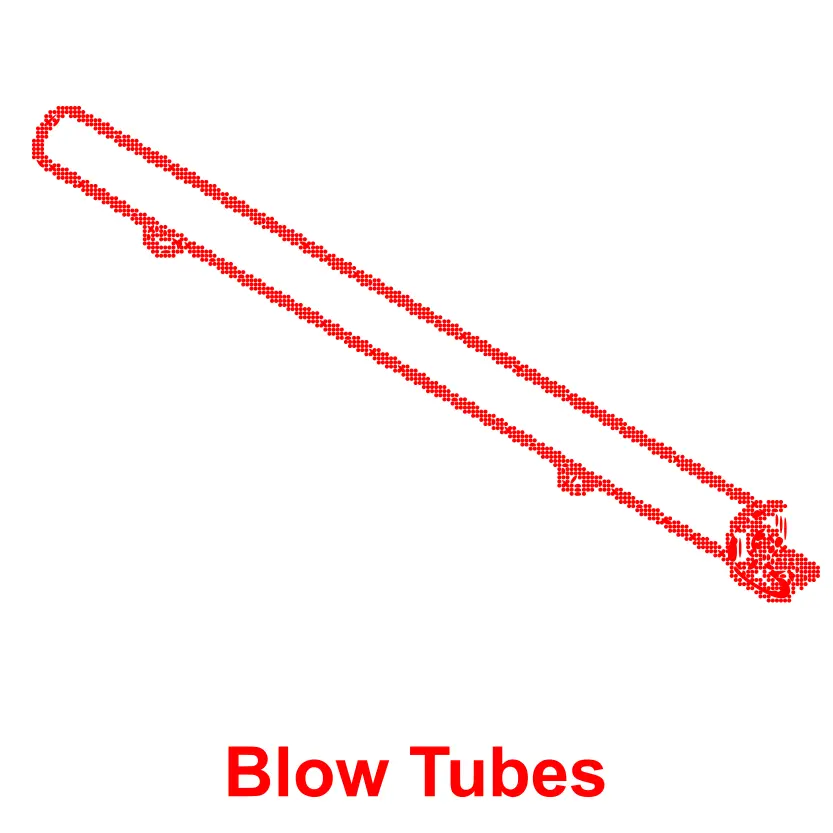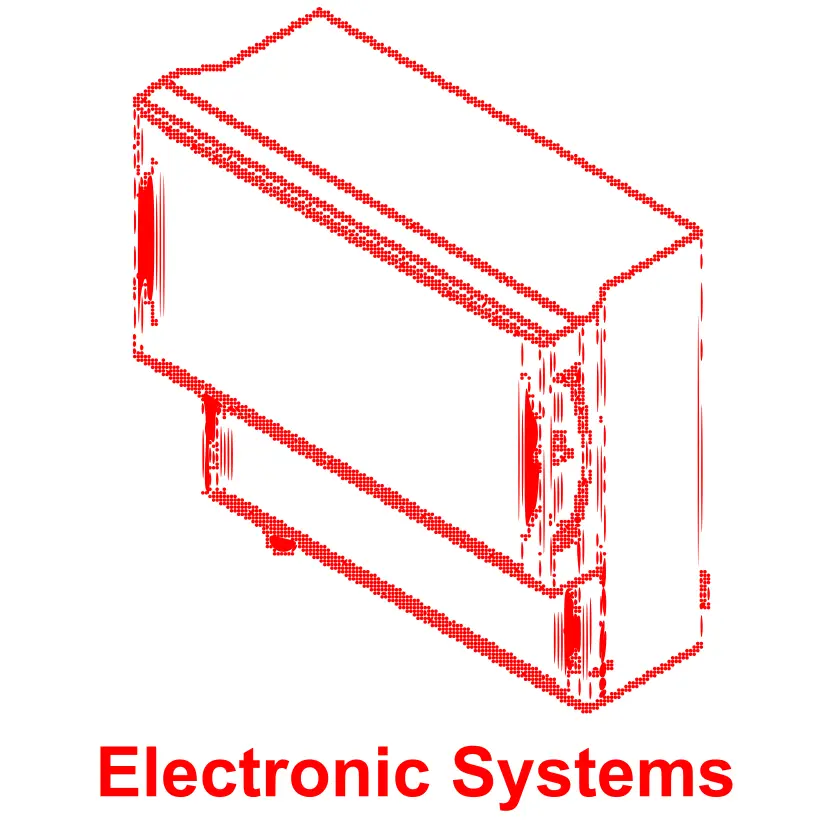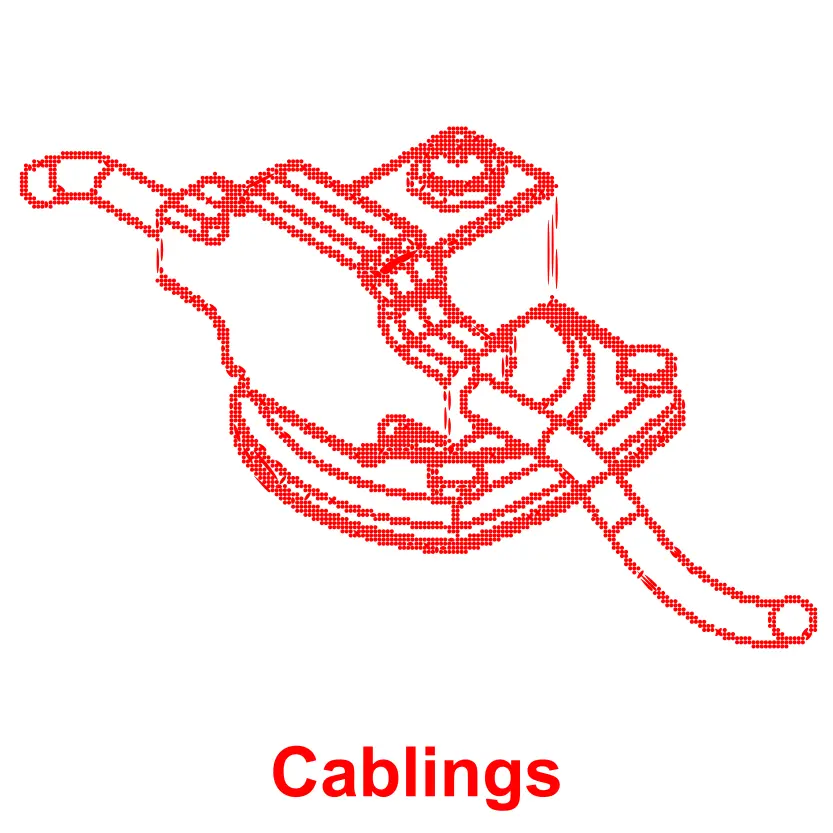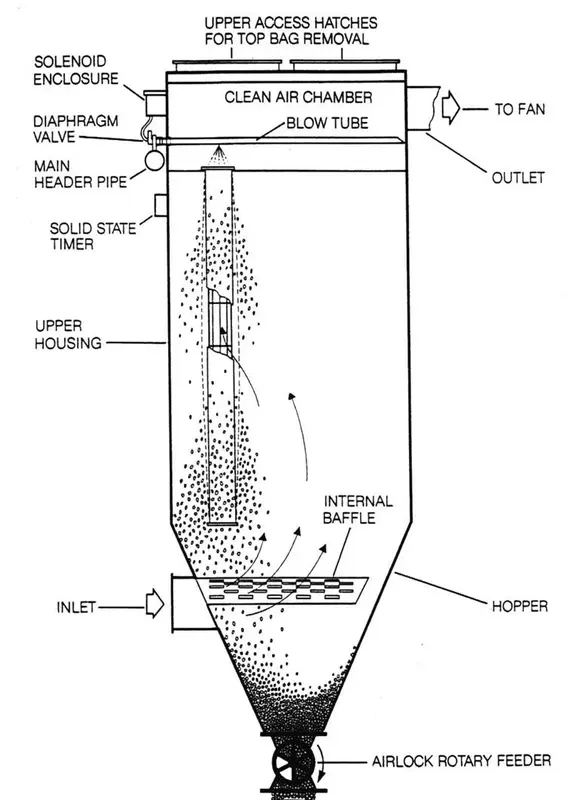Dust Collector for Dust Collection System in Industrial Environment
A Dust Collector is essential for maintaining suitable conditions for employees and equipment in industrial workspaces. By understanding the applicable regulations for dust collection, the main components involved, and the stages in the dust collector design process, you can better appreciate the importance of this system in an industrial environment.
An effective Dust Collector plays a crucial role in maintaining suitable conditions for employees and machinery within an industrial workspace. Carefully designed, it serves as protection against airborne dust and particles. These particles have the potential to endanger workers, damage equipment functionality, and hinder overall factory productivity. Given the importance of this function, selecting the right dust collection system is paramount in maintaining a clean, efficient, and regulation-compliant work environment.
Components of a Dust Collector
Header Tanks
Header Tanks are components designed to serve as fluid reservoirs, typically used in systems involving fluid circulation. Their function is to store fluid reserves, such as water or lubricants, and ensure a consistent supply to the main system. Header tanks can also act as pressure and temperature balancers, helping maintain operational stability.
Pulse Valves
Pulse Valves are valves used in pneumatic or hydraulic systems to control the pulsating flow of fluids. Their primary function is to rapidly open and close to generate pulsating impulses or pressure. Pulse Valves are commonly used in applications such as dust processing systems or filter cleaning systems, where targeted impulses are used to clean filter surfaces from dirt or particles.
Remote Pilote Enclosures
Remote Pilot Enclosures are enclosures or spaces designed to control devices or systems remotely. Their function is to protect control devices from external environmental conditions, ensuring reliable and safe operation. Remote Pilot Enclosures are often used in industries or environments where critical devices need protection from physical exposure or harsh environmental conditions.
Bulkhead Connectors
Bulkhead Connectors are components used to connect two parts of a system by penetrating through a wall or bulkhead. Their function is to create a leak-resistant connection between two different environments or components, such as in piping systems or cable systems. Bulkhead Connectors help facilitate the flow of fluids, signals, or electrical power across the physical boundary between two separate areas.
Blow Tubes
Blow Tubes are tubes or channels used to direct high-pressure air or gas flow to a specific area. Their functions vary, ranging from cleaning dust or particles from surfaces, directing material flow in industrial processes, to providing the necessary pressure or airflow in various applications.
Electronic Systems
Electronic Systems refer to a collection of interconnected electronic devices that work together to perform specific functions. The functions of Electronic Systems are highly diverse, including automatic control systems, data communication, information processing, and security systems. These systems consist of various electronic components such as sensors, microcontrollers, computers, and other hardware.
Cablings
Cabling refers to a network of cables or a well-organized set of interconnected cables. Its function is to transmit electrical signals, data, or information between various electronic devices or components within a system. Efficient and organized cabling is crucial for maintaining communication and system operational reliability.
Accessories & Spare Parts
Accessories & Spare Parts refer to various accessories or spare components that support the operation of a system or device. Their functions include repair, maintenance, enhancement, or adaptation of the main device. Accessories serve as functional add-ons, while Spare Parts play a role in replacing worn or damaged components to ensure the system's continuity.
Benefits of a Dust Collector
Improved Air Quality in the Workplace
Environmental Impact Reduction
Enhanced Working Environment
Cost Reduction in Cleaning
How Dust Collectors Work
A dust collector is a system designed to collect and remove dust and small particles from the air in a workspace. The main components involved in this process include header tanks, pulse valves, remote pilot enclosures, bulkhead connectors, blow tubes, electronic systems, cabling, as well as accessories and spare parts.
The process begins with air containing dust entering the dust collector. Inside the dust collector, dust is captured by filter bags. When the filter bags become filled with dust and get dirty, electronic sensors detect an increase in pressure and send a signal to the electronic systems.
The electronic systems will then control the pulse valves to open and provide bursts of pressurized air into the blow tubes. These air bursts create vibrations on the surface of the filter bags, dislodging the attached dust. The released dust falls down into a collector container.
The fluid in the header tanks can be used periodically to clean the filter bags to keep them efficient. All these components work together to keep the workplace free of dust and hazardous small particles.
Fabrication, Installation, and Repair Services for Dust Collectors from PT Indira Mitra Boiler
We, PT Indira Mitra Boiler, are trusted experts in fabrication for industrial heating needs and the sale of parts for industrial heaters. In addition to these services, we also provide dust collector fabrication services, including manufacturing, installation, and repair, catering to both large-scale industrial requirements and household needs. With years of experience in this industry, we take pride in delivering high-quality solutions for dust and particle control across various sectors. Our team of expert professionals is comprised of experienced individuals ready to provide the best service, ranging from planning and design to the implementation of the Dust Collector system tailored to your specific needs. We understand the importance of operational efficiency and a clean working environment for the success of your business. Therefore, we prioritize quality at every stage of our work, from selecting the best materials to implementing the latest technology in Dust Collector fabrication and installation.
Whether you need a Dust Collector device for manufacturing, processing plants, or any other sector, PT Indira Mitra Boiler is ready to provide the right solution. Moreover, if you encounter issues with an existing Dust Collector system, our team is well-versed in repairs and maintenance to ensure the seamless operation of your equipment. We take pride in being a part of your business's growth and success through reliable and trustworthy fabrication, installation, and repair services for Dust Collectors. Thank you for choosing PT Indira Mitra Boiler as your partner. Please do not hesitate to contact us for further information or a quote.
Types of Dust Collectors
Shaker Dust Collector
Shaker dust collectors are dust collection systems that are capable of cleaning offline when the airflow is temporarily stopped or dividing the baghouse into several compartments. The compartment design offers continuous unit cleaning while allowing individual compartments to be taken offline for servicing. This equipment is commonly used in casting, steel mills, mining, power generation, and smelting industries.
Pulse Jet Dust Collector
Pulse jet dust collectors are another type of baghouse system that comes in various designs to meet industrial application needs. Baghouse systems operate through rapid high-pressure air jet cleaning, which then sends bursts or shocks of air through the bags to dislodge and dispose of dust particles. Pulse jet models are the most common type of industrial dust collector due to their ease of customization, ability to handle various temperatures and pressures, and high collection efficiency. They can be found in most manufacturing environments where bulk solids are processed, including chemical and mineral production, food processing plants, and metal fabrication. Jet pulse collectors can be made from various materials, including carbon steel, stainless steel, inconel, hastelloy, and more .
Catridge Dust Collector
Cartridge collectors have several advantages over larger baghouse systems. These advantages include the ability to use less space for the same airflow, fewer filters, and the ability to change filters from outside the collector. These features can minimize safety hazards, reduce the time and labor costs associated with filter replacement¹³. Cartridge collectors are commonly used in various industries, including metalworking, woodworking, smoke collection, thermal spraying, and pharmaceutical manufacturing.
Cyclone Dust Collector
Cyclone dust collectors are a type of inertia separator that separates dust from gas flow through centrifugal force. Air is purified by creating a cyclonic action inside the cyclone collection chamber. The intense circular airflow resembling a whirlwind propels dust particles towards the cyclone walls, which slide down to the hopper base for collection. Cyclone systems can remove heavier and larger particles that are mixed with fine dust. They are often used as pre-cleaners before entering baghouse systems. Cyclone dust collectors are commonly used in woodworking, pulp and paper, shot blasting, milling, agriculture, recycling plants, and many more .
Electrostatic Precipitators
Electrostatic precipitators separate soot, ash, and dust particles from exhaust gases using static electricity. They operate on the same principle as ionic air purifiers, where electrostatic force negatively charges airborne particles as they flow through an ionized field between electrodes within a chamber. Electrostatic precipitators are typically found in industrial power plants that burn fossil fuels such as oil and coal.
Layout Sistem Dust Collector

Straight Ducting

"Straight Ducting" is a term used in ventilation and piping systems to refer to channels or pipes that have a linear or straight shape without any bends or sharp angles. Straight ducting is used to convey air or other substances from one place to another in a parallel and non-turning path. It is often utilized in various applications, including heating systems, ventilation, and dust collection systems. Straight ducting can take the form of either round or square pipes, depending on the needs and design of the system.
- Straight Round Welded Type: This is ducting that is fabricated using welding machines as a means to connect roll plate ducting that has already been shaped into a diameter.
- Straight Round Spiral Type: This is ducting that is fabricated using spiral machines as a means to connect roll plate ducting according to the diameter size.
- Rectangular Type: This is ducting that is fabricated in a square or rectangular shape, with welding used as the joining technique.
Connecting Component of Ducting

"Connecting Component ducting" is an item used to connect between ducting components. It typically consists of Pull Rings/V Bands and Flanges as connection options.
Damper

In a ducting system, a "damper" is a component used to regulate or control the airflow through air channels. Dampers can be made of metal sheets or other materials that can rotate or move to open or close a portion of the air duct. Their purpose is to adjust the amount of air flowing through the duct in accordance with the system's needs.
Dampers can be operated manually using a lever or automatically using a motor or automated control system. They play a crucial role in ensuring balanced and efficient air distribution.
Hood

A "Hood" is a ducting component placed near the source of dust. The hood's function is to capture dust particles in the dust source area.
Branch Ducting

Branch ducting is an essential part of the ventilation system that allows air to be efficiently directed from the main duct to each room.
Optimal branch ducting design will minimize airflow resistance and ensure even air distribution.
Elbow Ducting

Elbow ducting is a component in an air duct or ventilation system that has an angular or L-shaped shape. It is used to change the direction of airflow in the ventilation system. Elbow ducting is often used to connect two sections of air ducts moving in different directions, such as to bypass or avoid obstacles within a building's structure.
Elbow ducting is available in various bending angles, such as 45 degrees or 90 degrees, depending on the design needs of the ventilation system. They can be made from various materials, including metals like galvanized steel or aluminum, as well as plastics.
It is important to carefully select and install elbow ducting to ensure efficient and effective airflow within the ventilation system. Proper design and installation will help minimize airflow resistance and ensure the ventilation system operates effectively.
Rotary Air Lock Valve

Elbow ducting is a component in an air duct or ventilation system that has an angular or L-shaped shape. It is used to change the direction of airflow in the ventilation system. Elbow ducting is often used to connect two sections of air ducts moving in different directions, such as to bypass or avoid obstacles within a building's structure.
Elbow ducting is available in various bending angles, such as 45 degrees or 90 degrees, depending on the design needs of the ventilation system. They can be made from various materials, including metals like galvanized steel or aluminum, as well as plastics.
It is important to carefully select and install elbow ducting to ensure efficient and effective airflow within the ventilation system. Proper design and installation will help minimize airflow resistance and ensure the ventilation system operates effectively.
Fan Blower

Fan blower is a specialized mechanical device designed to move air or gas within a system. The primary function of a fan blower is to create airflow or gas movement within a specific system or space.
Fan blowers come in various sizes and designs to meet the needs of various industrial applications and systems. The selection of the right fan blower will depend on factors such as the required air volume, desired pressure, and operational environment.
There are several different types of fan blowers, each designed to meet specific needs in various industrial applications. Here are some common types of fan blowers:
- Centrifugal Fan
- Axial Fan
- Tangential or Cross-Flow Fan
- Regenerative Blower (Ring Blower)
- High-Pressure Blower (Turbo Blower)
- Positive Displacement Blower (Roots Blower)
- Multistage Blower
- Fan Coil Unit (FCU)
- High-Velocity Fan
- Dust Collector Blower
- Exhaust Fan
Info Dust Collector
For installation or dust collector inquiries, please contact
